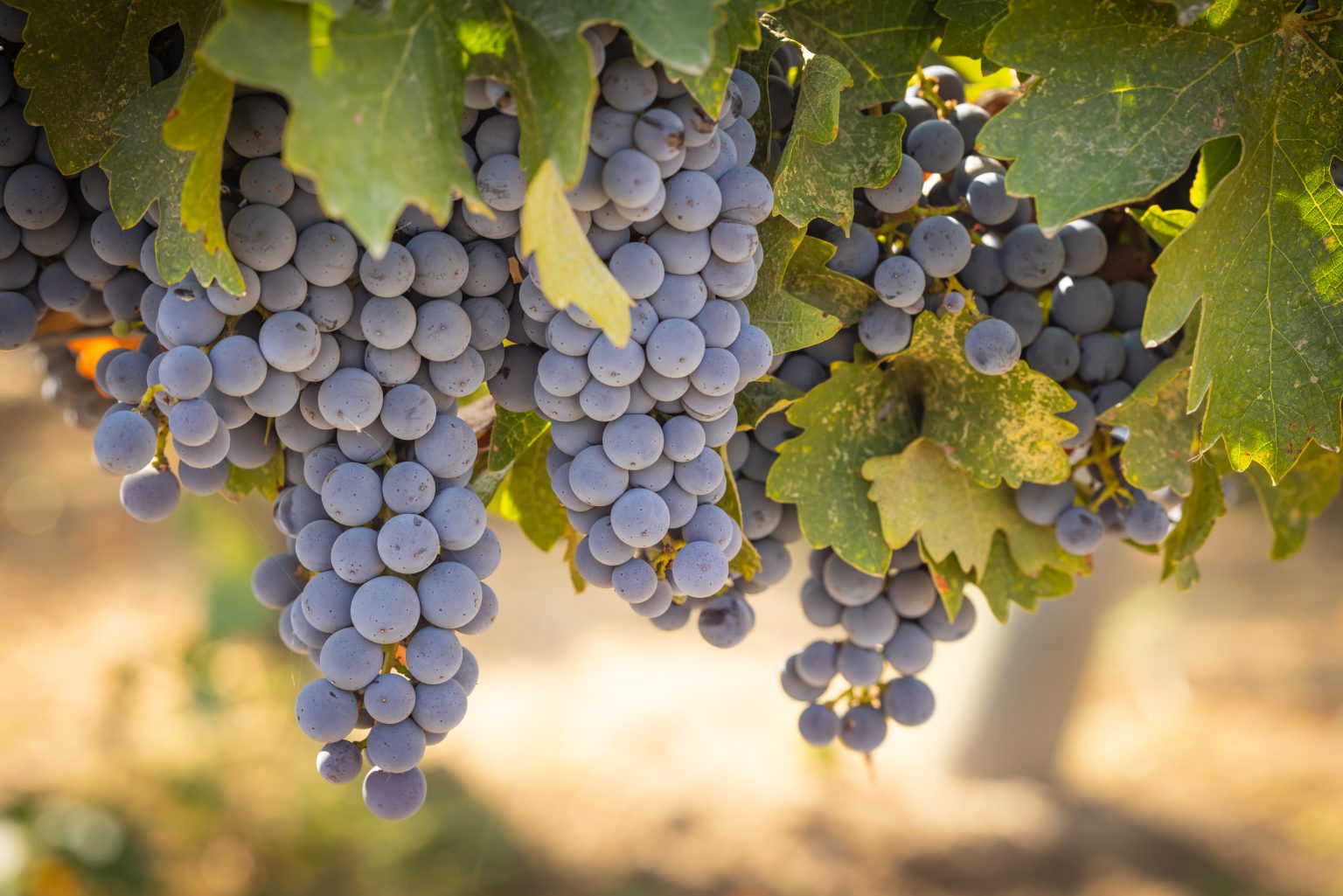It’s International Cabernet Sauvignon Day (happy birthday, dear Cabernet, and thank you for all the wonderful moments we’ve shared together!), so we decided to dedicate an article to its history, spread, and evolution in Romania – since it is, after all, the most planted wine grape in the world… though not in Romania.
- The Clear Leader of the “Internationals”
- Cabernet Sauvignon: Ironically, the Child of Cabernet and Sauvignon
- Cabernet Sauvignon: A High-Performance Grape
- Merlot and Cabernet: Cain and Abel
- Two Aromas that Define Cabernet Sauvignon
- Romanian Cabernet Sauvignon, a Great Choice
- Cabernet Sauvignon in Romania: Half the Size of Merlot
The Clear Leader of the “Internationals”
About 20 years ago, Cabernet Sauvignon was neck and neck with its brother Merlot in the race for the title of the most planted red wine grape in the world. Brother, meaning that both are biological offspring of Cabernet Franc. But when the global plantings reached around 220,000 hectares, Cabernet pulled ahead, partly due to the success of Californian Cabernets. Merlot remained in place, while Cabernet vineyards grew to approximately 339,000 hectares, making it the most planted wine grape in the world. The top is completed by Merlot, Airen, Tempranillo, and, in fifth place, the most planted white variety, Chardonnay.
It should be mentioned that Airen grows almost exclusively in Spain, and Tempranillo – apart from Spain, Portugal, Chile, Mexico, and Argentina – is cultivated only in relatively small areas in the USA and Australia. In a ranking of the true “globalized” grapes, planted in nearly every wine-producing country, we would actually see Syrah and Grenache next, followed closely by Sauvignon Blanc and Pinot Noir.
Of course, there are critical voices that argue the spread of these varieties comes at the expense of local and national grapes, flattening both taste and diversity of supply. But we’ll leave that debate for another time – it’s International Cabernet Day, and we don’t want to ruin the celebration, do we?

Cabernet Sauvignon: Ironically, the Child of Cabernet and Sauvignon
Cabernet Sauvignon has heavyweight parents in wine history (and the present too), but this fact was confirmed only recently. For a long time, it was thought to be an ancient variety from Roman times – Biturica, which in French became Vidure/Bidure. But neither linguists (who insisted that “vidure” came from “vigne dure” / “hard vine”) nor experts could agree. Finally, in the 1990s, DNA analyses clearly demonstrated that Cabernet Sauvignon descended from Cabernet Franc and Sauvignon Blanc – an accidental crossing that seems to have happened sometime in the 1600s.
Wine lovers had already suspected this, even claiming it openly, recognizing in Cabernet Sauvignon both the blackcurrant notes of Cabernet Franc and the herbal, green pepper notes of Sauvignon Blanc.
Apparently, Cabernet Franc’s birthplace is somewhere in Libourne, where it was discovered by Cardinal Richelieu, who fell permanently in love with its virtues and had it planted in the Loire Valley. It was here (or possibly back in its original home – though Sauvignon Blanc is more widespread in the Loire Valley) that its love story with Sauvignon Blanc likely unfolded. What is certain is that within less than a century, Cabernet Sauvignon – the child born of that union – had become one of the most popular wine varieties in Médoc (Bordeaux).
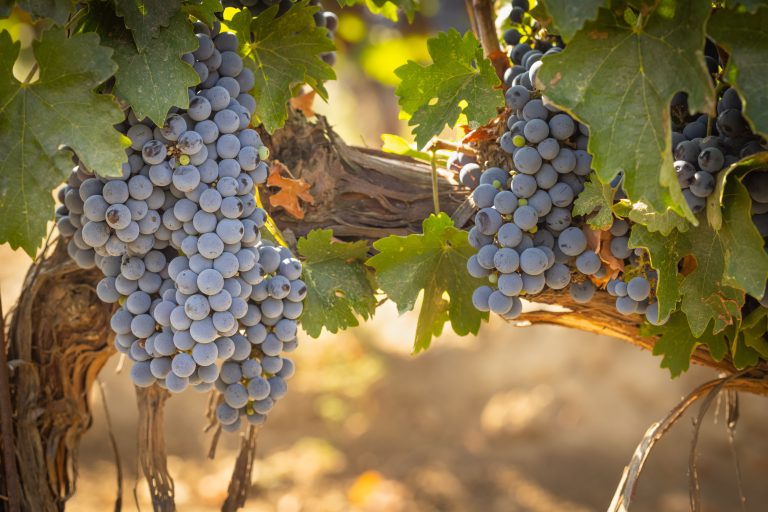
Cabernet Sauvignon: A High-Performance Grape
The love that vineyard owners around the world have for Cabernet Sauvignon is easy to understand. It’s not necessarily a highly productive grape – it has small berries, thick skins, and a large seed compared to the amount of pulp. It is highly resistant to most diseases and fairly resistant to frost, though it is vulnerable to powdery mildew.
Small berries, thick skins, large seeds, and little pulp translate into “high-quality wine,” since the skins, full of aromas, have relatively little juice to dilute their richness. The tannins from the seeds and skins, in turn, give the wine the necessary structure for long-term aging.
Just a few decades ago, when Cabernet Sauvignon was still competing with Merlot for the title of “most planted grape in the world,” some vineyard owners were hesitant to plant it because Cabernet normally ripens about two weeks later than Merlot, making it more vulnerable to early frost. Climate change has since solved this dilemma – today we have longer, warmer autumns – and Cabernet has become the clear, undisputed winner. It is now a reliable grape that winegrowers can count on.
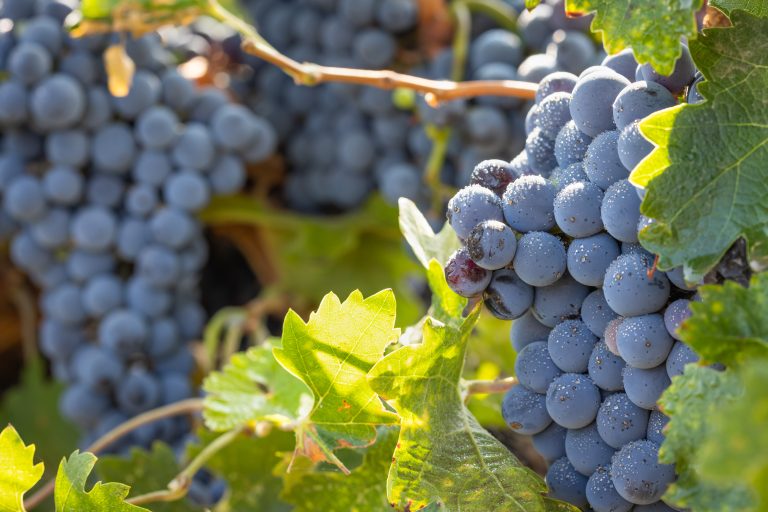
Merlot and Cabernet: Cain and Abel
The rivalry between Cabernet and Merlot most likely has a simple explanation. Cabernet seemed to thrive best on the stony, even rocky, fast-draining soils of the left bank of the Gironde estuary, while Merlot gave its finest results on the right bank (Libournais, Bourg, Blaye). From early on, the two contested the title of king of Bordeaux (usurping their own father, Cabernet Franc), until the local winegrowers decided to blend them together in the famous Bordeaux cuvées (alongside Cabernet Franc, Petit Verdot, or other varieties in tiny proportions, usually).
In the end, the entire Bordeaux region was the true winner, conquering the British market’s taste and enjoying centuries of prosperity, regardless of whether the exported clarets were dominated by Cabernet Sauvignon or by Merlot.
Two Aromas that Define Cabernet Sauvignon
As mentioned earlier, Cabernet Sauvignon can be easily recognized by two aromas: blackcurrant (cassis) and a greener, vegetal note reminiscent of grass and green bell pepper. To these, in cooler climates, are often added asparagus notes, thick green leaves (like burdock), and even earthy, forest-like nuances. In warmer regions, notes of mint, eucalyptus, and black pepper frequently develop.
When the grapes become overripe, jammy aromas appear quickly, even in young wines, but the overall profile is still dominated by dark fruits.
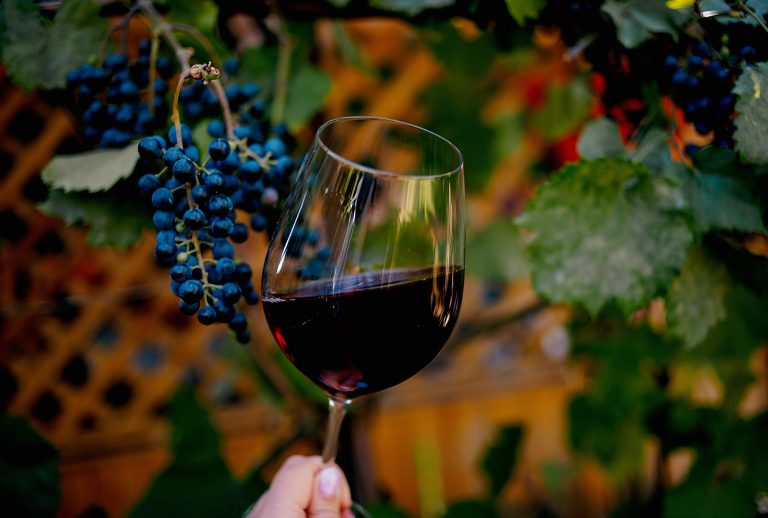
Romanian Cabernet Sauvignon, a Great Choice
A warmth-loving variety, Cabernet Sauvignon has integrated perfectly into the vineyards of Oltenia and Dobrogea, though it has also produced pleasant surprises in cooler regions. For instance, the 2019 Cabernet Sauvignon Diamond Collection from Domeniile Averești won a gold medal at the prestigious Concours Mondial de Bruxelles. Similarly, the 2023 Rupes Nobilis Cabernet from HB Wine (Miniș-Măderat) earned gold at Mundus Vini and silver at the Decanter World Wine Awards. Excellent Cabernet Sauvignon is produced almost every year at Balla Géza (also in Miniș), further north at Nachbil, and even in cooler Transylvania at Jelna.
Still in Oltenia, Domeniul Coroanei Segarcea impresses with Minima Moralia Recunoștință, while Crama Oprișor counts among its best-sellers the “red label,” the codename for its super-premium Cabernet Sauvignon.
Of course, Dealu Mare – the cradle of Romanian red wines – is also an excellent host for Cabernet Sauvignon (notably Cantvs Primvs from Viile Metamorfosis and the delicious Terra Romana from SERVE). However, in this region it is most often found in the well-established blends alongside Merlot and Fetească Neagră.
In sun-drenched Dobrogea, Cabernet emerges in the north, at Via Viticola Sarica Niculițel (part of the Vintruvian Estates group), while in the south, at Alira and Rasova, it is more often used in blends rather than released as a pure varietal.
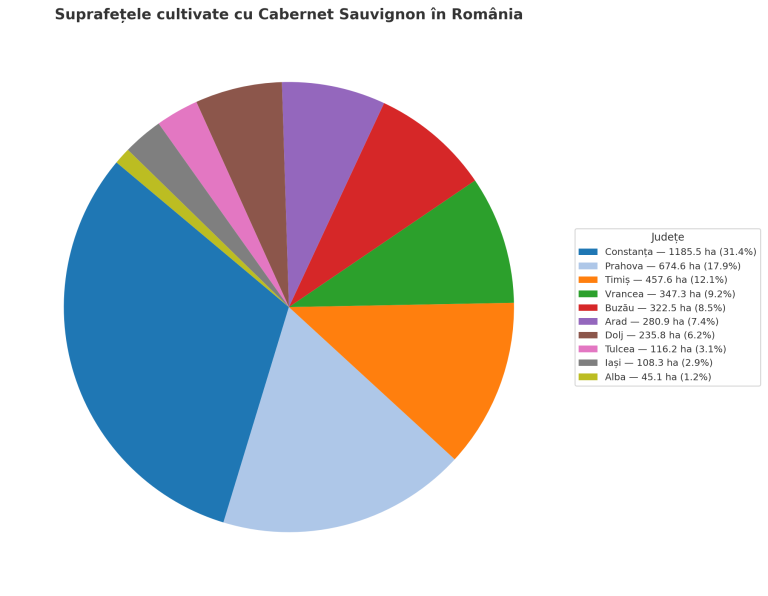
Cabernet Sauvignon in Romania: Half the Size of Merlot
Whether because Romanians are not yet ready for intense tannins, or because the wine feels too extractive and tiring, the fact remains that Cabernet accounts for just under half of the vineyard area devoted to Merlot (5,280 hectares compared to 10,860).
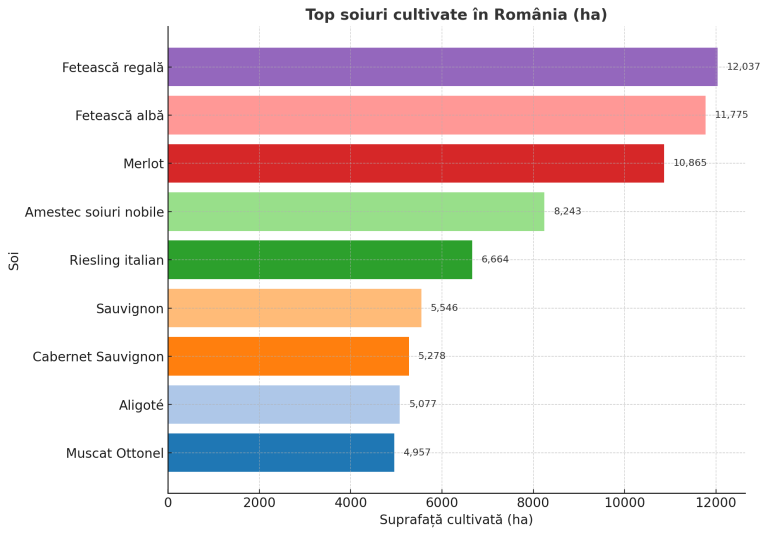
To be fair, Merlot produces silkier wines, with rounder tannins, ready to drink in fewer years than a Cabernet Sauvignon, while also boasting a similar structure. But for those with the patience to navigate the spice and subtleties of a mature Cabernet, there is likely a more complex universe to discover – one that is more sensitive to terroir and more accurately reflects the intentions of the winemaker.

